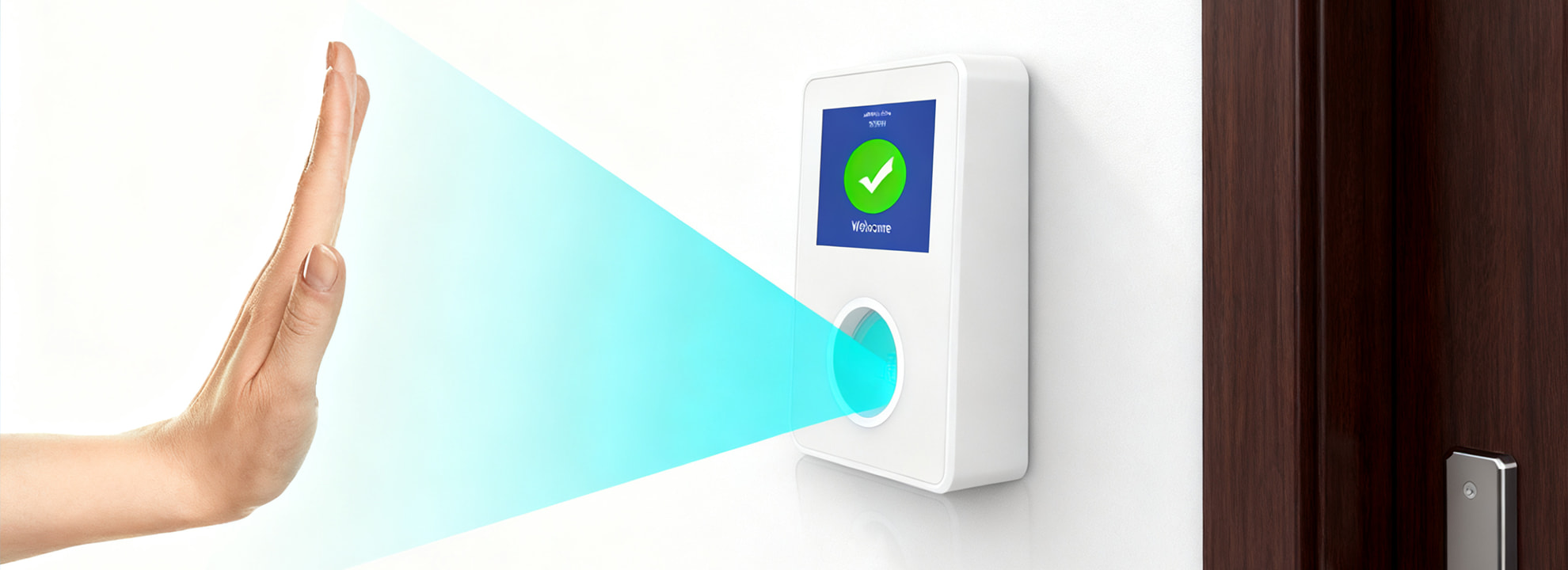What is Palm Print Recognition?
Palm print recognition is a biometric technology that identifies individuals based on the unique patterns on the surface of the palm, including lines, ridges, and textures. Palm prints are captured using optical sensors, which create a digital image of the palm. Advanced algorithms then extract distinguishing features for identity verification.
Key Features of Palm Print Recognition:
Surface-based identification: Relies on visible features like lines, wrinkles, and ridges.
High-resolution imaging: Requires clear images to extract accurate patterns.
Moderate accuracy: Can be affected by dirt, cuts, or external factors on the skin.
Non-invasive: Does not require any medical imaging or internal scanning.
What is Palm Vein Recognition?
Распознавание вен ладони, on the other hand, identifies individuals based on the unique pattern of veins inside the palm. Infrared light is used to capture the vein structure beneath the skin, which is then converted into a digital template. Because vein patterns are internal and unique to each person, palm vein recognition is considered highly secure and difficult to forge.
Key Features of Palm Vein Recognition:
Internal feature scanning: Captures the subcutaneous vein structure.
High security: Vein patterns are almost impossible to replicate or fake.
Non-contact or contact-based: Some systems allow non-contact scanning, enhancing hygiene.
Environmental resilience: Less affected by dirt, cuts, or skin surface changes.
Palm Vein VS Palm Print: Key Differences
| Feature | Распознавание отпечатков ладоней | Распознавание вен ладони |
|---|---|---|
| Технология | Optical imaging of palm surface | Near-infrared imaging of internal veins |
| Uniqueness | Moderate; lines can be similar among individuals | Extremely high; vein patterns are unique |
| Безопасность | Can be forged or spoofed with images or molds | Very difficult to forge or replicate |
| Точность | High, but affected by dirt, injuries, or skin changes | Extremely high, consistent in various conditions |
| Environmental Impact | Sensitive to external factors | Resistant to dirt, moisture, and minor injuries |
| User Experience | Simple, requires clean palm | Non-invasive, hygienic, may allow touchless scanning |
| Applications | Law enforcement, time & attendance, mobile authentication | Banking, high-security access control, healthcare, attendance systems |
Advantages of Palm Vein Recognition Over Palm Print
Higher Security: Vein patterns are internal and almost impossible to duplicate, making it ideal for high-security environments.
Hygienic and Non-invasive: Many palm vein scanners are touchless, reducing the risk of contamination.
Consistent Accuracy: Less affected by dirt, cuts, or surface skin changes.
Fast Recognition Speed: Modern palm vein devices can process authentication in milliseconds.
Advantages of Palm Print Recognition
Cost-effective: Generally less expensive than palm vein systems.
Ease of Integration: Can be integrated into existing biometric systems with optical sensors.
Widely Adopted: Commonly used in law enforcement and traditional attendance systems.
Applications of Palm Vein and Palm Print Recognition
Palm Print Recognition: Used in governmental ID verification, mobile devices, attendance tracking, and forensic applications.
Palm Vein Recognition: Preferred in banking, healthcare, corporate high-security access, airports, and other sectors requiring top-level security.
Заключение
While both palm vein and palm print recognition technologies provide biometric authentication, they differ significantly in terms of security, reliability, and user experience. Palm vein recognition is the superior choice for high-security and hygiene-sensitive environments, whereas palm print recognition remains a cost-effective solution for general identity verification and attendance tracking.
Choosing between these two technologies depends on your specific security needs, budget, and application scenario. With advancements in biometric technology, both methods continue to evolve, providing safer and more efficient ways to authenticate identity.
Связаться с нами
We would love to speak with you.
Feel free to reach out using the below details.


